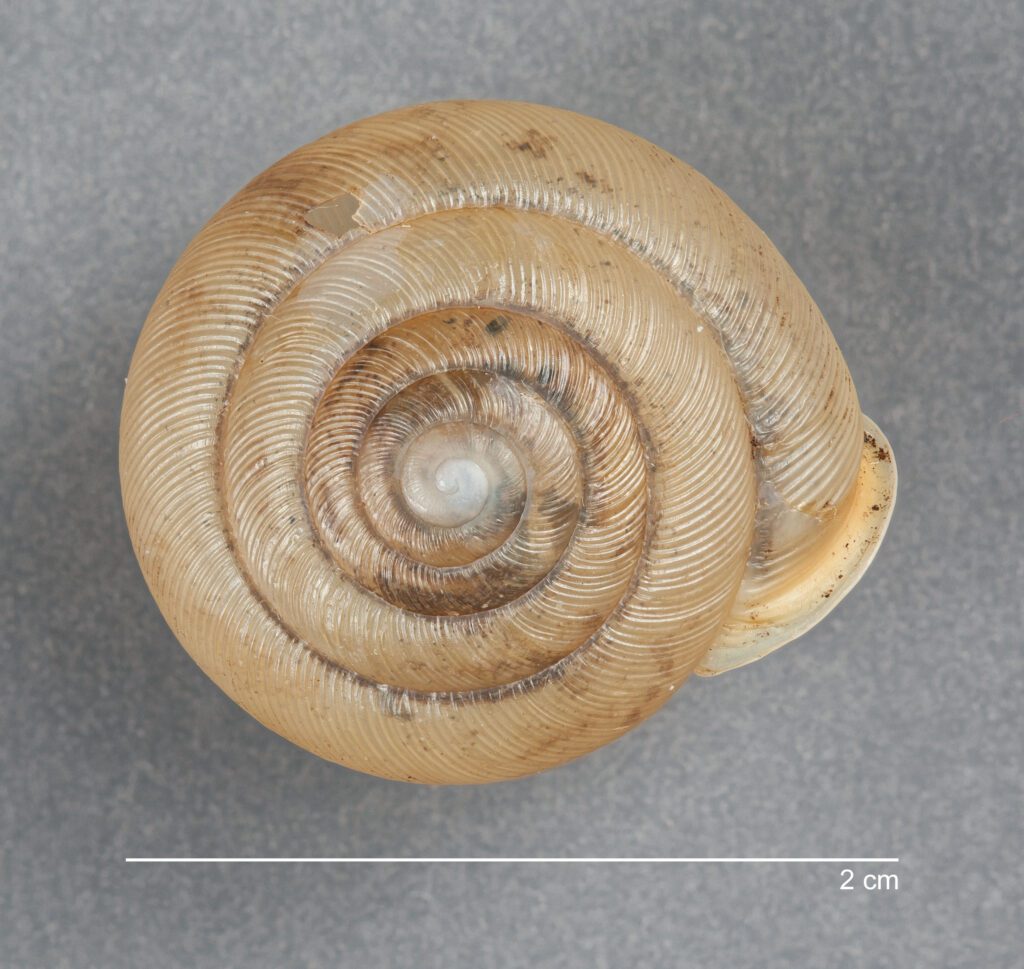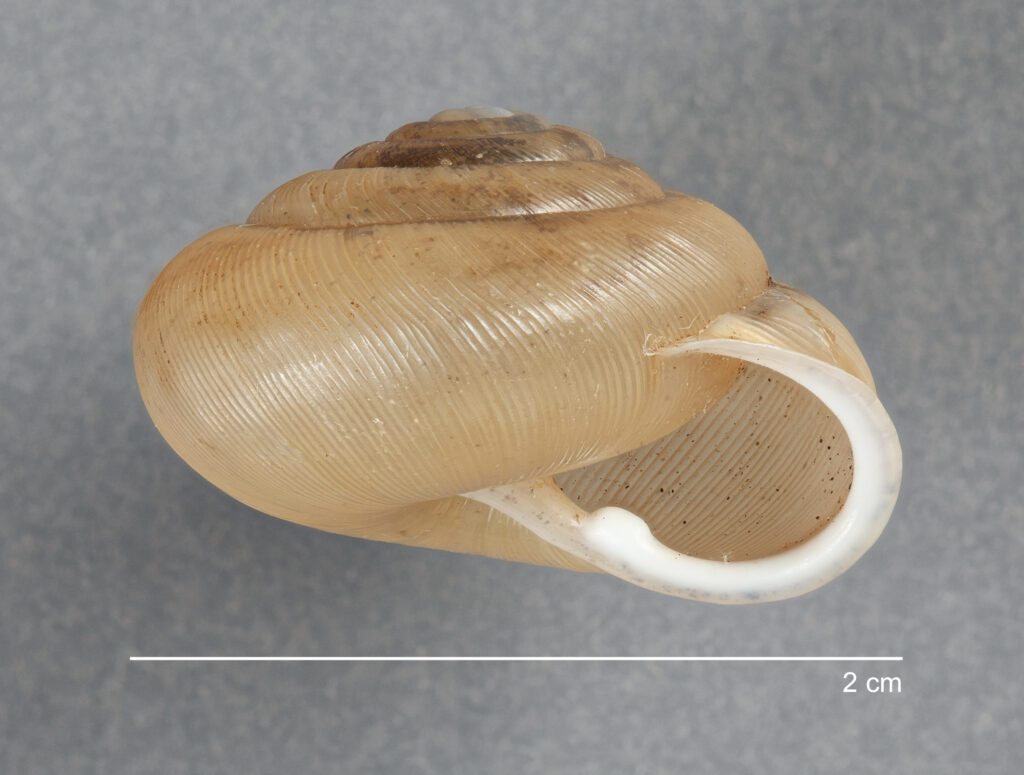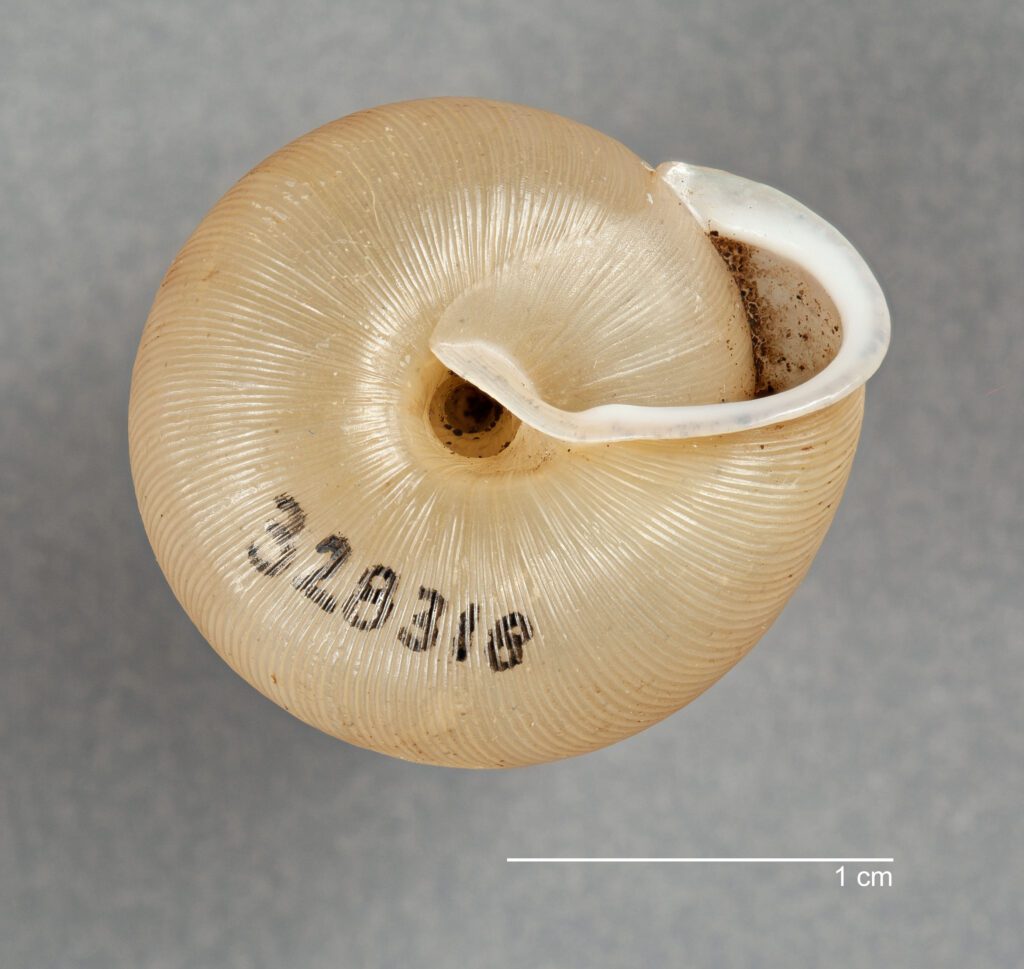
Image Usage Information




Image Usage Information
Family: Polygyridae
Common name: Spike-lip Crater
Discovery: Pilsbry, 1906
Identification
Width: 19-27 mm
Height: 12-16mm
Whorls: 5+
The reflected lip of this polygyrid is rather narrow, the apex a bit pronounced, and the shell relatively fragile. The two small teeth in the round aperture of this shell are diagnostic. It has a deep, open umbilicus (not a narrow slit like Mesodon thyroidus).
Ecology
The Spike-lip Crater seems to have an affinity for hardwood and mixed wood forests with understory vegetation, sometimes near small gaps or wetland edges. It prefers to live in wet leaf litter and log debris. Densities are usually low.
Taxonomy
Appalachina sayana has also been known as A. sayanus, Helix diodonta, H. sayi, Mesodon sayanus, M. sayi, Polygyra sayana and P. sayii.
Distribution
This cool forest species ranges from the Smoky Mountains to Maine and Michigan, into southern Canada. In Virginia it is reported from the southwestern-most counties and Patrick County, though not reported from several northwest border counties where it is found in adjacent West Virginia.
Conservation
NatureServe Global Rank: G5
